racial justice

Black Friday, the day after Thanksgiving known for shopping, has become a rallying point for #BlackLivesMatter activists, not just retailers looking for a holidays bump in sales.
After the non-indictment decision in Ferguson, Rahiel Tesfamariam of Urban Cusp created the #NotOneDime boycott campaign, that “calls for a cease on all non-essential shopping from Thanksgiving through Cyber Monday and reclaiming Black Friday as a national day of action and service,” according to the campaign’s website.
When Time Magazine announced that Black Friday sales fell $1 billion this year, many on Twitter called it a victory for #NotOneDime.
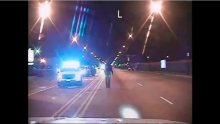
An 80s song told us “video killed the radio star.” The music was catchy and referred to the varied attitudes we all had about technology. What is this? What would we do now? Fast-forward 35 years, and videos are the very technology for which we are so thankful.
Video changes everything.
When the Chicago Police Department released the dash-cam video of 17-year-old Laquan McDonald being shot 16 times by one of their own, the city braced for disruption. When we learned of the $5 million settlement to the McDonald family that stipulated the video remain confidential, the city braced for disruption. When residents discovered that footage from a nearby security camera had been deleted by Chicago police, the city braced for disruption. Mayor Emanuel and his team had seen the video, and were afraid of the public reaction.
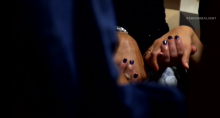
After the shooting that left nine members of Emanuel AME Church dead on June 17, an employee at A+E Networks asked, “Can’t we do something?”
Tonight, at 8 p.m. ET/PT, Alicia Keys, John Legend, Pharrell Williams, and many other musicians will provide an answer. In partnership with United Way and iHeartRadio, A + E Networks is hosting “Shining a Light: A Concert for Progress on Race in America.”
This is more than just another benefit concert.
“This is going to invent a hybrid, a new form,” the famous producer and director Ken Ehrlich said.
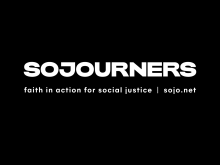
*Note: President Tim Wolfe resigned as president of the University of Missouri on November 9, 2015
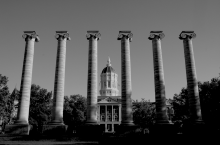
We have witnessed a remarkable series of events on the Columbia, Mo., campus of the University of Missouri this week. The university president and the chancellor of the Columbia campus resigned Nov. 9 in response to protests claiming that university leadership had failed to appropriately address and respond to a toxic racial climate on campus.
The recent racist incidents, which many students and faculty felt the administration had failed to confront, reveal a stunning lack of empathy for students of color at the university. They include: racial slurs hurled at a black student body president and a black student organization, and a swastika painted in human feces on the wall of a residence hall.
But these specific incidents merely allowed a long-simmering stew of disrespect, verbal attacks, and marginalization of students of color to come boiling to the surface.
The Columbia campus of the University of Missouri is only a two-hour drive from Ferguson, Mo. When Michael Brown was shot in August 2014, protesters took to the streets of Ferguson every night, and student activists from Mizzou were among them. They saw what standing up to entrenched institutional racism looked like, and they saw that victories could be won with non-violent protest.

When I was 15, I stepped into a warm bath on my church's sanctuary stage. I was a bit of an outsider - the occasionally bullied Chinese-American kid in the white suburb - and I had found a place of belonging at this Chinese immigrant church. I made a joke about how I felt the same way about my new faith as my 16-year-old friend felt about her new driver's license: I had no idea how I ever lived without this. Even my pastor chuckled as he clasped my hands, preparing to dunk me.

The crush of religious people I have just witnessed is staggering. Under one roof, a tapestry of faiths flock together -- Buddhists, Christians, Sikhs, Muslims, Humanists, Jews -- congregated in a singular location to discuss some of the most pressing matters facing humanity today. But for every external difference of faith I see, this conference is harmonious. People are in good spirits. Here in Salt Lake City I attended my first Parliament of the World Religions -- the largest inter-religious conference in the world -- and I have been moved from what I have witnessed.

Who your neighbor is and how you should treat them were topics addressed by keynote speaker Lisa Sharon Harper at Saturday's Summit on Race, Poverty and Inequality held at the Henderson Fine Arts Center.

While the Black Lives Matter movement officially started after George Zimmerman’s acquittal in the death of Trayvon Martin, the fight for true racial equality began long before then with the Civil Rights Era. Among the allies of the African American freedom activists were the Kennedy family, a large number of Jewish-Americans and notably, progressive evangelicals.

I met with a black friend for lunch about two years ago and discussed my concerns about the status of racial harmony in our community. I had my conscience aroused over the death of young Trayvon Martin and the reaction I received from my white friends in the days following the verdict acquitting George Zimmerman. I related to my black friend that the verdict was greeted by my white friends by offers of high fives and celebration. I was stunned and saddened and did not understand the glee.

Rev. Jim Wallis leads the Christian social justice group Sojourners. He is known for merging faith with public life, urging candidates for office to discuss moral issues in a way that transcends ideological divisions. Michel Martin talks with Wallis about his book America's Original Sin: Racism, White Privilege and the Bridge to a New America.
MICHEL MARTIN, HOST:

The shooting at Emanuel AME Church in Charleston, South Carolina, earlier this summer has been deeply troubling to us and other people of faith in Anderson Township.

In 1851, attendees of a feminist convention gathered in a packed hall in Akron, Ohio. It was a time when — even in the midst of a fight for women's rights — mostly men spoke. They talked of dainty women — delicate and deserving of special protection.
1. Can the Evangelical Left Rise Again?
“The Evangelical left, once a substantial contingent of American life, is now seemingly small and powerless compared to its rightwing counterpart.”
2. Why Every Church Needs a Drag Queen
Nadia Bolz-Weber, everyone’s favorite tattoo-sporting, grace-spouting priest, is back with a new book, Accidental Saints.
3. One Novel Way to Bring Healthcare to Poor Neighborhoods
A local neighborhood health center believes it has developed an approach that works for their clients in poverty — partnering with a local grocery story to combine the shopping and medical experience into one outing.

In the last year, Black Lives Matter activists have changed the consciousness of a nation. And all along the way they have vocally advocated for concrete policy changes. But now their demands are collected in a single, beautiful website, designed to inspire activists and provoke officials.
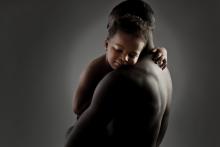
Even in its bitter moments, Between the World and Me remains a parental love letter. As such, we are drawn to words that at once familiar and intimate, revealing the hopes and vulnerability of a father who, like me, feels such pressing need to save his child from and through his own history.
"The truth is that I owe you everything I have," Coates tells his son tenderly.
"I was grounded and domesticated by the plain fact that should I go down, I would not go down alone."
To read Coates is to consider just how dramatically different my own parenting imperative is from fathers who teach their sons resistance but who must contend with the possibility, indeed the likelihood, that such instruction will lead to bodily loss.
For those of us who grew up believing we are white, and perhaps especially for those of us raising sons all too likely to believe the same, there is at least one urgent message we should share alongside Coates: Our children need to know that they live in a nation, branded by violence, that values some bodies more than others.
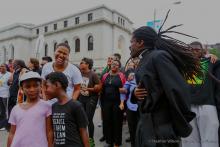
PHOTO ESSAY: On Monday, fifty-seven people were arrested as part of the #UnitedWeFight march and peaceful civil disobedience at the Thomas F. Eagleton U.S. Courthouse. The march was in commemoration of the year-long resistance sparked in #Ferguson by the murder of #MikeBrown.
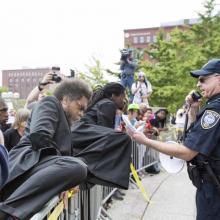
The latest killing happened two days before the 1-year anniversary of Michael Brown’s death when Christian Taylor, 19, crashed his SUV through the window of a car dealership in Arlington, Texas. Officers shot him in the course of a struggle. In fact, as I write this, there have been 601 lethal police shootings in 2015, 24 of them unarmed black men, according to an ongoing independent analysis by Washington Post: That’s an average of two unarmed black men shot dead by cops per month since January. This number does not include police shootings of black women, police killings that did not involve gunfire, or deaths while in police custody. Freddie Gray’s and Sandra Bland’s deaths are not included in the Washington Post tally.
Over the course of the year since Michael Brown died, we have learned critical lessons that have fueled the movement, bringing together young activists, clergy, and evangelicals in unlikely, yet cohesive alliance.